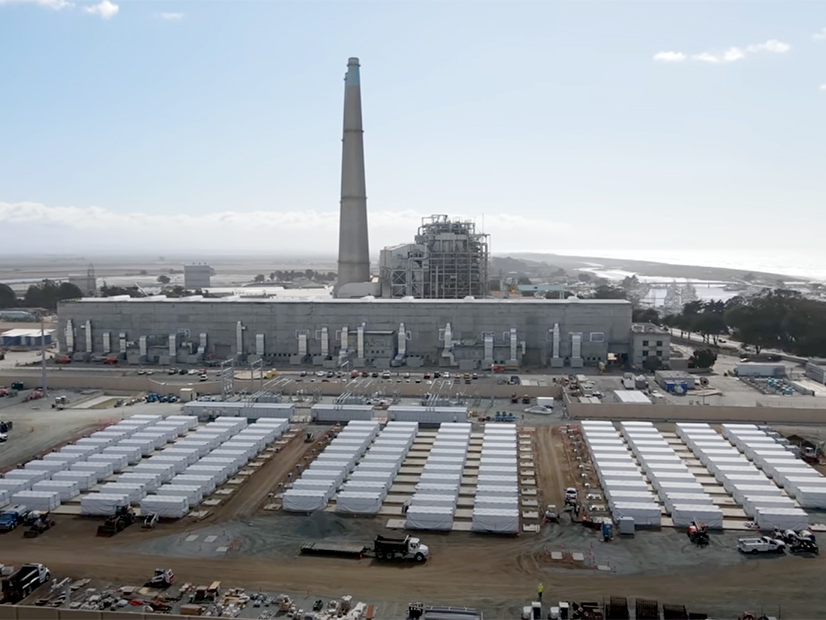
A major battery storage project built by Pacific Gas and Electric (NYSE:PCG) and Tesla (NASDAQ:TSLA) is ready to help California deal with the reliability problems it encountered in the past two summers, PG&E said Monday.
The utility said its 182.5-MW Elkhorn Battery facility had been “fully energized and certified for market participation by” CAISO earlier this month. The project’s 256 Tesla Megapack battery units sit on 33 concrete slabs on Monterey Bay and can discharge 730 MWh of electricity for up to four hours, providing energy and ancillary services to the grid.
“We are ushering in a new era of electric system reliability and delivering a vision into the future for our customers with the commissioning of the Tesla Megapack system in Moss Landing,” PG&E CEO Patti Poppe said in a news release. The utility owns and will continue to operate the units, it said.
The Elkhorn facility now ranks among the world’s largest battery energy storage systems (BESS), and it sits beside the No. 1 largest, Vistra’s (NYSE:VST) 400-MW Moss Landing facility, along with Vistra’s gas-fired Moss Landing Power Plant.
Moss Landing’s racks of non-Tesla batteries were shut down after overheating incidents in September and February triggered fire alarms, set off sprinklers and melted equipment.
“Vistra is in the process of conducting repairs, commissioning facility systems and implementing enhancements to improve the original design of the facility,” the company said in its initial findings on the September incident, released in late January about two weeks before the second incident occurred.
PG&E purchases Moss Landing’s output, along with energy from four other large BESSes: the 200-MW Diablo Storage System in Contra Costa County, the 60-MW Coso Battery Storage in Inyo County, the 63-MW NextEra Blythe system in Riverside County and the 50-MW Gateway system in San Diego County. All went online in the last two years.
Batteries for Reliability
In June 2021, the California Public Utilities Commission ordered PG&E and the state’s two other large investor-owned utilities, Southern California Edison and San Diego Gas & Electric, to procure 11.5 GW of new resources in the next three years to head off shortfalls.
It ordered the IOUs and other load-serving entities to purchase another 3 GW of additional capacity through supply- and demand-side programs to prevent shortages during potentially extreme heat waves in the summers of 2022 and 2023. (See CPUC Orders Procuring 3 GW of Capacity.)
The transition from fossil fuels to clean energy in California and other Western states has increased wind and solar generation while coal and gas plants have retired.
Reliability problems arose during Western heat waves in 2020 and 2021, as solar power waned on hot summer evenings but demand remained high. CAISO ordered rolling blackouts in August 2020 and declared energy emergencies both years.
Responding to the CPUC orders, PG&E said it hopes to have 3,300 MW of in-state battery storage under contract by 2024. More than 955 MW of that is already connected, and about 1,400 MW of storage capacity is scheduled to come online in 2022 and 2023, it said. PG&E won approval from the commission Thursday to contract with nine more proposed battery storage projects, totaling 1,600 MW, that could start operating between 2024 and 2026.
CAISO said it has added more than 2,400 MW of battery storage since the 2020 blackouts and expects to add 2,100 more by June.
The ISO posted a video in March on “California’s historic embrace of battery storage to support the grid as we transition to a carbon-free system.”
“Last summer was a pivotal moment for battery storage, and we felt it was important to document the story and to share our experiences and the lessons we learned,” CEO Elliot Mainzer said in a statement on the video.
“The potential of lithium-ion batteries had been talked about and anticipated for a long time,” he said. “Now they are a central part of our toolbox to make sure that supply and demand are balanced, and the system remains reliable even during the most challenging conditions.”

